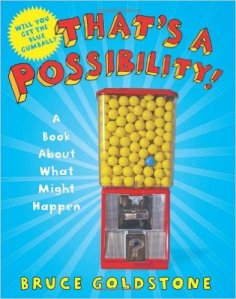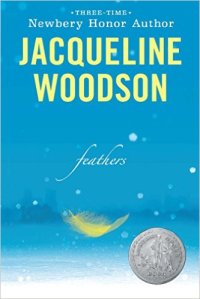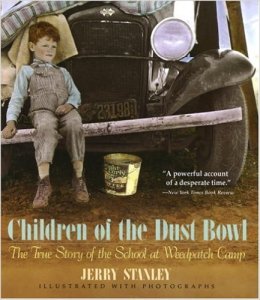 Tonatiuh, Duncan. Separate Is Never Equal: The Story of Sylvia Mendez & Her Family’s Fight for Desegregation. New York : Abrams Books for Young Readers, 2014. Print.
Tonatiuh, Duncan. Separate Is Never Equal: The Story of Sylvia Mendez & Her Family’s Fight for Desegregation. New York : Abrams Books for Young Readers, 2014. Print.
Plot: This is the true story of how the Mendez family won their 1947 case for desegregation of California schools a full seven years before Brown v. Board of Education, the Supreme Court ruling that ended school segregation in the United States. Nine-year old Sylvia Mendez and her brothers are baffled when they are told they must attend “the Mexican school”, not their local neighborhood school. Sylvia’s parents are both U.S. citizens and she speaks perfect English, but her brown skin and tell-tale last name are the only ‘facts’ the all-white school needs to know. The dismal state of neglect of “the Mexican school” motivates Sylvia’s parents to spend all their savings to file a lawsuit. After much community organizing and further legal proceedings, the Mendez family wins their case, paving the way for equal opportunities for all California students, regardless of race, ethnicity or language.
Topics: History – U.S. – 20th Century, Civil Rights, School Integration, Hispanic-Americans, Education
Awards: Cyblis Awards; International Latino Book Awards; Robert F. Silbert Informational Book Medal; Tomas Rivera Mexican American Children’s Book Award
Review: This book offers great bang for your buck, highly applicable to a number of subjects and concepts taught throughout grade school- from Language Arts to History/Social Studies and the Visual Arts – to the concepts of character, prejudice/bias, citizenship, and bullying. Older students can use the text to investigate the multiple causes and effects of desegregation, while younger students can learn about the concepts of equality and diversity, and begin to develop a sense of the ways in which immigrants have helped define Californian and American culture.
Quantitative Reading Level: Lexile: 870L (adult-directed), ATOS Book Level: 5.1 , Flesh-Kincaid Reading Level: 4.6, AR Interest Level: Lower Grades (k-3)
Qualitative Reading Analysis: This book has a rating of medium for text complexity. Background knowledge and subject-matter preparation will help students place the book into proper context, and a vocabulary lesson will likely be required (a glossary is included at the end of the book). This book is appropriate for adult-directed reading in grades 1-4, wherein younger students will be drawn to the illustrations and able to grasp their message of injustice, while older students will also enjoy the expressive illustrations, but will additionally be able to glean the larger message that problems can be solved through social action via the legal system for a lasting resolution. Selective reading /paraphrasing is suggested for lessons with younger students.
The full color folk art illustrations are integral to the story. Highly ‘readable’, the illustrations could nearly tell the story without the supporting text. Appealing to a wide age range, the illustrations are at once simplistic and artistically sophisticated. Stylistically resembling ancient Mexican/Mixtec motifs, the illustrations enable author/illustrator Duncan Tonatiuh to layer in meaning and cultural context in a highly accessible way. While the illustrations are models of simplistic, uncluttered efficiency, the text is less so. Often, the text feels overly dense with details- such as legal proceedings and specific school administrator names and titles- that are faithful to the facts, but distract from the otherwise powerful message of the story.
Content/Subject Area & Standards:
History-Social Science
Grade 1:
1.5 Students describe the human characteristics of familiar places and the varied backgrounds of American citizens and residents in those places. #2.Understand the ways in which American Indians and immigrants have helped define Californian and American culture.
Grade 2:
2.3 Students explain governmental institutions and practices in the United States and other countries. #1. Explain how the United States and other countries make laws, carry out laws, determine whether laws have been violated, and punish wrongdoers.
2.5 Students understand the importance of individual action and character and explain how heroes from long ago and the recent past have made a difference in others’ lives.
Grade 3:
3.3 Students draw from historical and community resources to organize the sequence of local historical events and describe how each period of settlement left its mark on the land. #3. Trace why their community was established, how individuals and families contributed to its founding and development, and how the community has changed over time, drawing on maps, photographs, oral histories, letters, newspapers, and other primary sources.
3.4 Students understand the role of rules and laws in our daily lives and the basic structure of the U.S. government. #1. Determine the reasons for rules, laws, and the U.S. Constitution; the role of citizenship in the promotion of rules and laws; and the consequences for people who violate rules and laws. #2. Discuss the importance of public virtue and the role of citizens, including how to participate in a classroom, in the community, and in civic life.
Grade 4:
4.5 Students understand the structures, functions, and powers of the local, state, and federal governments as described in the U.S. Constitution. #5 Describe the components of California’s governance structure (e.g., cities and towns, Indian rancherias and reservations, counties, school districts).
4.4 Students explain how California became an agricultural and industrial power, tracing the transformation of the California economy and its political and cultural development since the 1850s. #8. Describe the history and development of California’s public education system, including universities and community colleges.
English Language Arts
CCSS.ELA-LITERACY.RI.1.2
Identify the main topic and retell key details of a text.
CCSS.ELA-LITERACY.RI.2.1
Ask and answer such questions as who, what, where, when, why, and how to demonstrate understanding of key details in a text.
CCSS.ELA-LITERACY.RI.2.4
Determine the meaning of words and phrases in a text relevant to a grade 2 topic or subject area.
CCSS.ELA-LITERACY.RI.2.5
Know and use various text features (e.g., captions, bold print, subheadings, glossaries, indexes, electronic menus, icons) to locate key facts or information in a text efficiently.
CCSS.ELA-LITERACY.RI.3.1
Ask and answer questions to demonstrate understanding of a text, referring explicitly to the text as the basis for the answers.
CCSS.ELA-LITERACY.RI.3.6
Distinguish their own point of view from that of the author of a text.
CCSS.ELA-LITERACY.RI.4.2
Determine the main idea of a text and explain how it is supported by key details; summarize the text.
CCSS.ELA-LITERACY.RI.4.3
Explain events, procedures, ideas, or concepts in a historical, scientific, or technical text, including what happened and why, based on specific information in the text..
CCSS.ELA-LITERACY.RI.4.10
By the end of year, read and comprehend informational texts, including history/social studies, science, and technical texts, in the grades 4-5 text complexity band proficiently, with scaffolding as needed at the high end of the range.
Visual Arts
Grade 1:
Develop Perceptual Skills: 1.1 Describe and replicate repeated patterns in nature, in the environment, and in works of art
Historical and Cultural Context: Diversity of the Visual Arts- 3.3 View and then describe art from various cultures.
Aesthetic Valuing: Derive Meaning- 4.2 Identify and describe various reasons for making art.
Grade 2:
Artistic Perception: Analyze Art Elements and Principles of Design- 1.3 Identify the elements of art in objects in nature, the environment, and works of art, emphasizing line, color, shape/form, texture, and space.
Historical and Cultural Context- Role and Development of the Visual Arts- 3.1 Explain how artists use their work to share experiences or communicate ideas.
Connections, Relationships, Applications: Visual Literacy- 5.3 Identify pictures and sort them into categories according to expressive qualities (e.g., theme and mood).
Grade 3:
Historical and Cultural Context: Diversity of the Visual Arts- 3.5 Write about a work of art that reflects a student’s own cultural background.
Aesthetic Valuing: Make Informed Judgments- 4.3 Select an artist’s work and, using appropriate vocabulary of art, explain its successful compositional and communicative qualities.
Connections, Relationships, Applications: Careers and Career-Related Skills: 5.4 Describe how artists (e.g., architects, book illustrators, muralists, industrial designers) have affected people’s lives.
Grade 4:
Historical and Cultural Context: Diversity of the Visual Arts- 3.2 Identify and discuss the content of works of art in the past and present, focusing on the different cultures that have contributed to California’s history and art heritage.
Aesthetic Valuing: Derive Meaning 4.2 Identify and describe how a person’s own cultural context influences individual responses to works of art.; 4.5 Describe how the individual experiences of an artist may influence the development of specific works of art.
Connections, Relationships, Applications:Careers and Career-Related Skills- 5.4 Read biographies and stories about artists and summarize the readings in short reports, telling how the artists mirrored or affected their time period or culture.
Grade 5:
Historical and Cultural Context: Diversity of the Visual Arts- 3.4 View selected works of art from a major culture and observe changes in materials and styles over a period of time.
Aesthetic Valuing: Derive Meaning- 4.1 Identify how selected principles of design are used in a work of art and how they affect personal responses to and evaluation of the work of art.
Curriculum Suggestions:
Consider buying a class set of this book. Have the students peruse it on their own, telling them to simply look at the illustrations, and then read it aloud in class for a teacher-led discussion, including defining key terms (included in glossary). After the the discussion, (older) students can use the book like a textbook, gleaning facts embedded in the story and using the back matter which includes photos, glossary, multimedia bibliography and an index, to take their inquiry a step further.
The book will help students identify bias and prejudice. It can also be used to illustrate key themes that are taught throughout the elementary grades, including bullying, citizenship, and multiculturalism. It would also work well in an art class discussion of the cultural dimensions of the visual arts, the various reasons for making art, and as an example of the use of folk art from various time periods and cultures.
Idea: Have students use Storyboard That to share the basic story of desegregation and to encourage social action, good citizenship and tolerance.
Supporting Content (Multimedia Resources):
Author Talk (8 min. video): Duncan Tonatiuh introduces his book and the inspiration behind his illustrations. Rather than a book reading, this video features the author explaining, in his own words, what the book is about and, importantly, where he got the inspiration for his striking illustrations. In this conversational, unrehearsed, and possibly homemade video, viewers are invited ‘behind-the-scenes’ to see what the author looks like- he’s dressed in jeans and appears to be in his own living room- and how he works. After a brief review of the book’s main idea in plain language, we move into his workroom where he shows his computer screen up close, bringing up images of the primary sources upon which the book’s illustrations are based, including a sample of an ancient Mixtec codex and an archival photograph taken during the years of segregation. Suitable for both lower and upper elementary students.
The National Archives’ David M. Rubenstein Gallery Exhibition Records of Rights (Online interactive exhibition): This online exhibit allows students to see the depth and breadth of the ongoing struggle of Americans to define, attain, and protect their rights, helping students connect the Mendez case with the broader civil rights movement. The interactive exhibit is organized as a timeline, with a slider to move through key time periods and events, allowing the visitor to drill down into each section, revealing primary source material such as photographs, correspondence, governmental documents, and posters, as well as a 1-2 paragraph explanation. Within each drill-down there is a list of clickable tags, further enabling students to ‘connect the dots’ and follow their particular interest. While the complexity rating of the writing and its accompanying visual resources is quite high, having the exhibit displayed as a timeline, is instructive. This resource allows students to explore as they wish, while providing teachers excellent source material on which to base further instruction and activities. Suitable for upper elementary students.
A Story of the Hispanic Population in the US (infographic): This infographic shows latino population growth in the U.S. from 1850 – 2010. A series of pie charts, viewable at various time intervals, help illustrate how latino immigration has changed over time, in terms of numbers but also in terms of country of origin and citizenship, adding context to the era discussed in the book. It would also be useful for a broader discussion on Latino culture in general and or/immigration, as it sheds light on the widespread misunderstanding that all Latinos are Mexican and illustrates how Mexican immigration is in relative decline. Elementary school students will need assistance drawing more complex inferences from the data, but taken at face value, it provides a simple, yet interactive practice for using pie charts. Suitable for upper elementary students.
Twister (app): This app allows you to create a simulated tweet from a fictional or historical character. A simple form asks for a user name, which the student makes up, and the real name of the character being imitated so that it can be matched with an accurate photograph in the database. Then, the student types in the tweet (imagining what that person would say) and an historically accurate date; click ‘submit’ and a full color simulated tweet appears that can be either saved, printed, or shared. A fun app intended as an educational tool to help students identify the key characters, subjects, and motives of a particular topic. The QR code will take students to my completed tweet, but they have the opportunity to create their own with a simple click directly from that page. Lots of opportunity for creative thinking here. Suitable for upper elementary students.
The Racial Dot Map (interactive infographic): A truly exceptional infographic showing racial distribution at the neighborhood level. Using 2010 census data, the map shows one dot, color coded by race, for every person in America. While the book teaches the power of community action in changing racial segregation laws, this infographic expands the conversation to show that official desegregation has not necessarily resulted in true integration in some parts of the US. It would be instructive, for example, to compare Los Angeles with parts of the midwest, showing students the large concentrations of latinos in LA, and helping them recognize that the races are far more interspersed there than, say Chicago or Detroit. Students will need guidance to discover the stories held by the data, but will glean much and have a lot of fun simply exploring on their own. Suitable for upper elementary students.
Tags: Book Review,Citizenship,Desegregation, INFO237,K5, K5-ELA, K5-History-SocSci, K5-VisualArts,Mexican-Americans,Multicultural
 Janeczko, Paul B, and Melissa Sweet. Firefly July: A Year of Very Short Poems. , 2014. Print.
Janeczko, Paul B, and Melissa Sweet. Firefly July: A Year of Very Short Poems. , 2014. Print.






